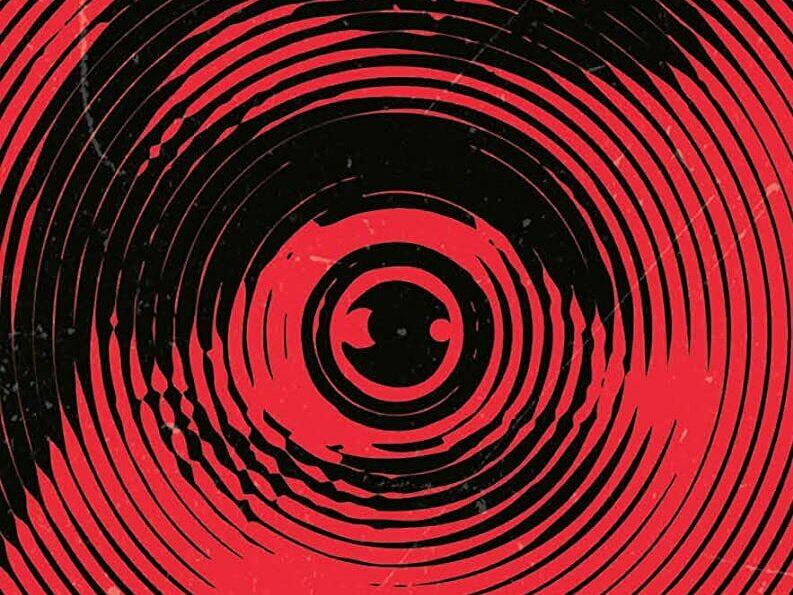Section Branding
Header Content
In 'Silver Nitrate,' a cursed film propels 2 childhood friends to the edges of reality
Primary Content
Silvia Moreno-Garcia is best known, and rightly so, for her wildly popular and deeply sumptuous horror novel from 2020, Mexican Gothic — a tale that draws, like much of her work, from her Mexican heritage.
But when it comes to her latest book, Silver Nitrate, it might be better to look back at the bestselling author's lesser known, but no less engrossing, debut novel, the 2015 fantasy Signal to Noise, which focused on the magical qualities trapped in the grooves of vinyl records.
Her latest novel likewise plumbs the mystery of an obsolete physical format popularized in the early 1900s: silver nitrate, the chemical basis of film stock that was phased out in the 1950s due to its volatility. Unlike vinyl records, which can last forever if cared for properly, silver nitrate film stock is combustible: The substance was actually used to make explosives at the same time moviemakers relied on it to help film their classics during the golden age of cinema.
Moreno-Garcia's fascination with the otherworldly potential of vintage physical media took the form of outright spellcasting in Signal to Noise. But in Silver Nitrate, there's something more subtle being woven.
The story takes place in Mexico City in 1993, but its roots run back to the film-noir era, when a fictional filmmaker named Abel Urueta abandoned his opus Behind the Yellow Wall. The shoot seemed cursed, and the unfinished movie became the stuff of cinematic legend.
Protagonists Tristán and Montserrat happen upon the elderly Urueta, and their fascination with the film's mystique propels them into the most eldritch edges of reality, where the phrase "movie magic" takes on a whole new meaning.
Before becoming a successful novelist, Moreno-Garcia made her mark as one of the foremost experts on the work of weird-fiction pioneer H. P. Lovecraft — as well as more obscure contemporaries such as Robert W. Chambers, upon whose work Lovecraft expanded.
Unsurprisingly, she steeps Silver Nitrate in this well of eerie myth. Most visibly, the title of Urueta's Behind the Yellow Wall comes across as a wink-nudge mashup of Lovecraft's 1919 story "Beyond the Wall of Sleep" and Chambers' 1895 book The King in Yellow. Lovecraft incorporated Chambers' cosmic horror into his own, and Moreno-Garcia absorbs their tradition and spins it into a far more colorful and progressive form, one that hopefully makes the notoriously racist Lovecraft turn in his grave.
If this sprawling tangle of mythic and literary references seems a little esoteric, fear not. Silvia-Moreno's soaring cosmic horror stays rooted in grit and feeling: Tristán and Montserrat — friends since childhood with unresolved attraction between them — are both vulnerable and able, damaged and heroic.
Their dire situations point to the tragic reversals of fortune that celebrity culture and show biz seem to revel in. Both Tristán and Montserrat have withstood the ups and downs of the entertainment business. The latter ekes out a living as a prickly sound engineer who is almost too expert for her line of work; the former is a washed-up soap-opera actor whose star has dimmed due to a disfiguring car cash (yes, there are strong shades of Montgomery Clift in that tragedy, just one more loving reference to cinematic history and lore).
Silver nitrate, the substance, tends to erode, leaving the images captured on film indistinct; similarly, the careers, legacies and queerness of Tristán and Montserrat are being edited by the forces of neglect and erasure, not to mention social injustice, which weighs heavy on both their professional and personal lives.
"This was life, they figured," Moreno-Garcia writes of Tristán and Montserrat's journey through cinematic hell and back. "Not a fabulous medley of spells, hexes, and intoxicating power, but the simple, ordinary assembly of sights and sounds that were nevertheless a wonder, for they were viewing and listening to them together."
As always with Moreno-Garcia, the corporeal ends up meaning more to her characters than the spectral — and the heart is far from powerless against the horror. One recommendation: Read Silver Nitrate on paper. Moreno-Garcia imbues the tangible qualities of physical books with a palpable, talismanic power, just as she does with the vinyl records and silver nitrate film within those novels. And if any ink happens to come off on your fingers, take that as further proof of her magic.
Jason Heller is a Hugo Award-winning editor and author of the book Strange Stars: David Bowie, Pop Music, and the Decade Sci-Fi Exploded.
Copyright 2023 NPR. To see more, visit https://www.npr.org.

